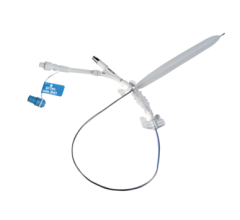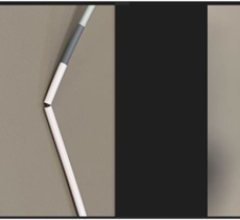March 3, 2014 — Biotronik announced the release of its Passeo-18 Lux drug-releasing balloon (DRB) in all countries accepting CE mark, following recent approval. The Passeo-18 Lux DRB catheter has already shown clinical efficacy in the BIOLUX P-I study. Data collected at six-month and 12-month intervals demonstrated that patients treated with Passeo-18 Lux were less likely to require treatment again.
BIOLUX P-I is a randomized, controlled study investigating the safety and performance of Passeo-18 Lux (n=30) versus an uncoated Passeo-18 PTA (percutaneous transluminal angioplasty) catheter (n=30) in the treatment of lesions in the femoropopliteal segment of up to 200 mm in length. The primary endpoint is late lumen loss in the Passeo-18 Lux arm versus the uncoated PTA catheter arm. Secondary endpoints include the target lesion revascularization (TLR) rate and the Rutherford classification. The study enrolled patients at six centers in Germany and Austria.
Six-month primary endpoint data, evaluated by an independent core lab, previously documented significantly reduced angiographic late lumen loss (LLL) (p=0.038*) in the Passeo-18 Lux arm (LLL= 0.55 ± 0.73 mm) versus the uncoated PTA catheter (LLL= 1.07 ± 1.01 mm). Binary restenosis was also reduced (p=0.048*) in the Passeo-18 Lux arm versus the uncoated PTA catheter (11.5 percent vs. 34.6 percent respectively).
At 12 months, Kaplan-Meier estimates demonstrated a freedom from TLR rate of 84.6 percent for patients treated with Passeo-18 Lux versus 58.3 percent of patients treated with an uncoated PTA catheter (p=0.064). Furthermore, patients receiving treatment with Passeo-18 Lux demonstrated greater improvement in Rutherford classification compared to baseline (72 percent) versus those receiving treatment with PTA (65.2 percent).
“Passeo-18 Lux has demonstrated excellent clinical results and supports our growing confidence in DRBs,” said Professor Dierk Scheinert, chief clinical investigator of BIOLUX P-I and department head, Cardiac Center, Park Hospital, Leipzig, Germany. “It is very deliverable and easy to use compared with other technologies and treatment options for these demanding vessels.”
Passeo-18 Lux is a novel combination device for treating de novo and restenotic femoropopliteal lesions. Its design is based on that of the proven Passeo-18 PTA catheter, which is coated with a matrix of anti-proliferative paclitaxel and a biocompatible excipient — enabling an optimal drug transfer to the target lesion tissue. An additional element, however, unique to Passeo-18 Lux, is the novel protective insertion aid to facilitate easier device introduction and handling.
“The release of Passeo-18 Lux is a significant advancement for both physicians and patients, as DRBs are emerging as a safe and durable therapy option for lower limb arterial disease,” commented Alain Aimonetti, vice president of sales and business development, Biotronik Vascular Intervention. “Our significant investment in developing outstanding peripheral vascular devices, supported by clinical evidence, is translating into real clinical benefits.”
For more information: www.biotronik.com


 June 13, 2024
June 13, 2024 








